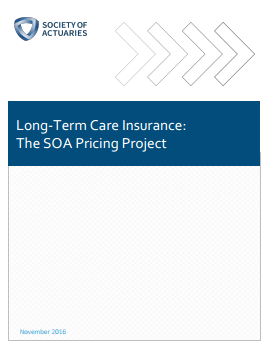The Advisor's View of Long-Term Care Planning
Never miss any update
Subscribe to the Advisor's View of Long-Term Care Planning newsletter today to receive updates on the latest news from our carriers.
Your privacy is important to us. We have developed a Privacy Policy that covers how we collect, use, disclose, transfer, and store your information.
Are fears of rate increases on new LTC Insurance policies overblown?

Traditional Long-term care insurance sales have been trending down since the turn of the century despite the favorable demographics of an aging population who needs to plan. There are many theories about why this is the case, but many point to the fact that the number of rate increases on in-force policies has led to financial advisors and their clients becoming hesitant to buy traditional LTC Insurance because of the possibility of these big increases.
If you are a consumer interested in planning for long-term care, it would seem you have reason to be nervous. First, many advisors are telling clients to expect rate increases on LTC purchased - a way of saying past performance is an indicator of future performance. Similarly, if you are a client deciding to still go ahead and complete an application, the state required personal worksheet will list that carriers rate increase history implying that there may be some correlation between the past rate increase history of carriers and the pricing of the current product.
It would seem someone who wants to buy coverage has two choices - apply for a hybrid life/ltc plan with guaranteed premiums (even if there isn't a need for life insurance) or buy traditional coverage at a lower premium and benefit amount and "budget" for anticipated rate increases based on past history, waiting for the inevitable rate hike.
Forget that fear. LTC Insurance purchasers should be comfortable that today's plans are going to remain fairly stable over the lifetime of premium payment. The reasons is the efforts of the two groups responsible for not repeating the pricing mistakes of the past - the carrier actuaries and the regulators. Consumers and advisors should understand how a combination of new pricing methods and smart regulations keeps plan premiums stable.
Here is a brief overview of how both groups have tackled the issue:
The Actuaries
How have pricing actuaries changed their approach to pricing LTC plans? It comes down to 5 changes.
- Carriers have updated their lapse rate (dropping coverage) assumptions on new polices to near zero. Missing this assumption was a huge factor behind older policies premium increase because, not surprisingly, people who keep coverage my claim one day.
- The investment and interest assumptions on reserves are more conservative reflecting the low interest rate environment.
- Carriers have instituted gender-distinct pricing because woman live longer and claim more. Older plans with large single female populations had worse experience than expected.
- Based on claim data, new products have adjusted mortality and morbidity assumptions - people are living longer and using LTC policies for expensive assisted living.
- Finally, because the rate stability regulations discussed below, carriers have added a buffer to protect against adverse experience which might lead to a rate increase - and the end of being profitable on a block of business.
Want to dig deeper on the actuary perspective - check out this SOA pricing project PDF.
The Regulators
State insurance regulators have also tried to stop pricing problems on new LTC business by adopting rate stability regulation in the early part of the 2000's. Here are the ways in which the NAIC long-term care insurance model regulation, which is similar to the law in the vast majority of states, helps keep new premiums stable:
- A move from pricing based on claim loss ratio to one based on long-term premium stability. Prior to rate stability regulation, carriers had to meet minimum loss ratios on LTC products - something that is part of health insurance with it's more frequent early claims. This approach was a poor fit for the long-tail of LTC claims and led to underpricing.
- Removing the carrier profit incentive: Under the old rules, when a rate increase was requested carriers could fold normal profit levels into the increase. Now carriers with rate increases must decrease their profit levels to a cap pre-determined by the new regulations.
- Current plans have to be at least as expensive as older plans with rate increases. Carriers can't offer new premium rates on similar plans that are less than the rates of in-force plans after rate increases. In essence, the rate increase is already included in the new business rates!
- Actuarial Certification: Under the old rules, companies did not have to certify the accuracy of their pricing assumptions - if they were wrong, they would be able to request a rate increase to correct their mistake. Under rate stability rules, the actuary must certify that no premium increases are anticipated over the life of the policy.
The fact is the vast majority of rate increases have happened on blocks of business written prior to rate stability regulation. If you'd like to learn more, please listed to a recent webinar we did on this topic with Scott Olson of www.ltcshop.com. You can find a link to the call here.
